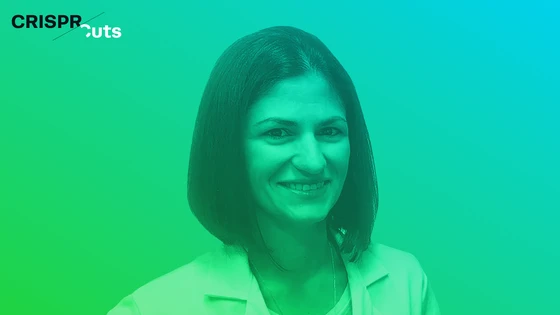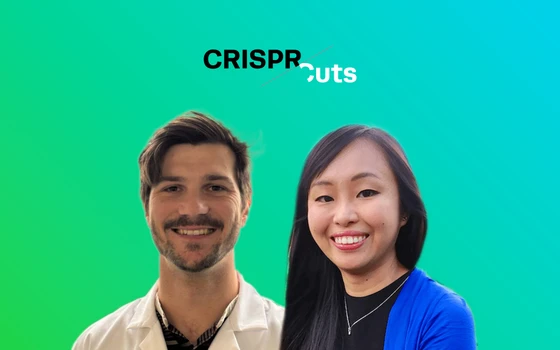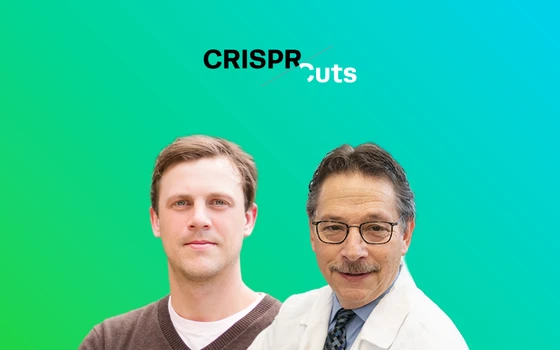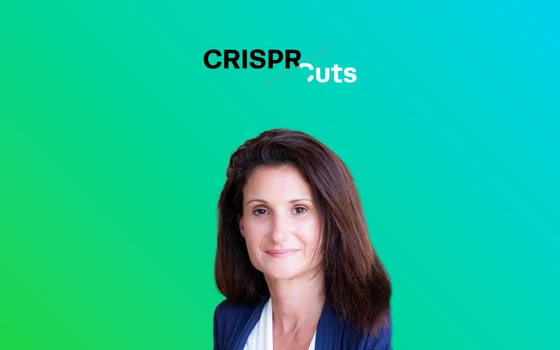Dina Simkin is a Professor of Neurology at Northwestern University, where she studies mutations in the genes that code for ion channels, and how they affect cellular function. Dina has worked across several different disease areas, including epilepsy, using induced pluripotent stem cells (iPSCs) to develop neuronal models.
In this interview, Dina spoke with Synthego’s Meenakshi Prabhune (Minu) and Peter Deng (Pete) about her research. Dina discusses her scientific background and why ion channels are so interesting, the different diseases she works on, the importance of CRISPR in her field, how she models neurological disorders in iPSCs, and the importance of proper controls for this type of research. She also shares her predictions about the next few years of neuroscience research.
This interview has been edited and condensed for clarity.
Dina Simkin Breaks Down Epilepsy Cell Modeling
Dina Simkin, Professor of Neurology at Northwestern University, joins us in this episode of CRISPR Cuts. Dr. Simkin talks about her path to becoming a researcher, art, and the importance of patient and isogenic iPSC models to study genetically linked forms of epilepsies.
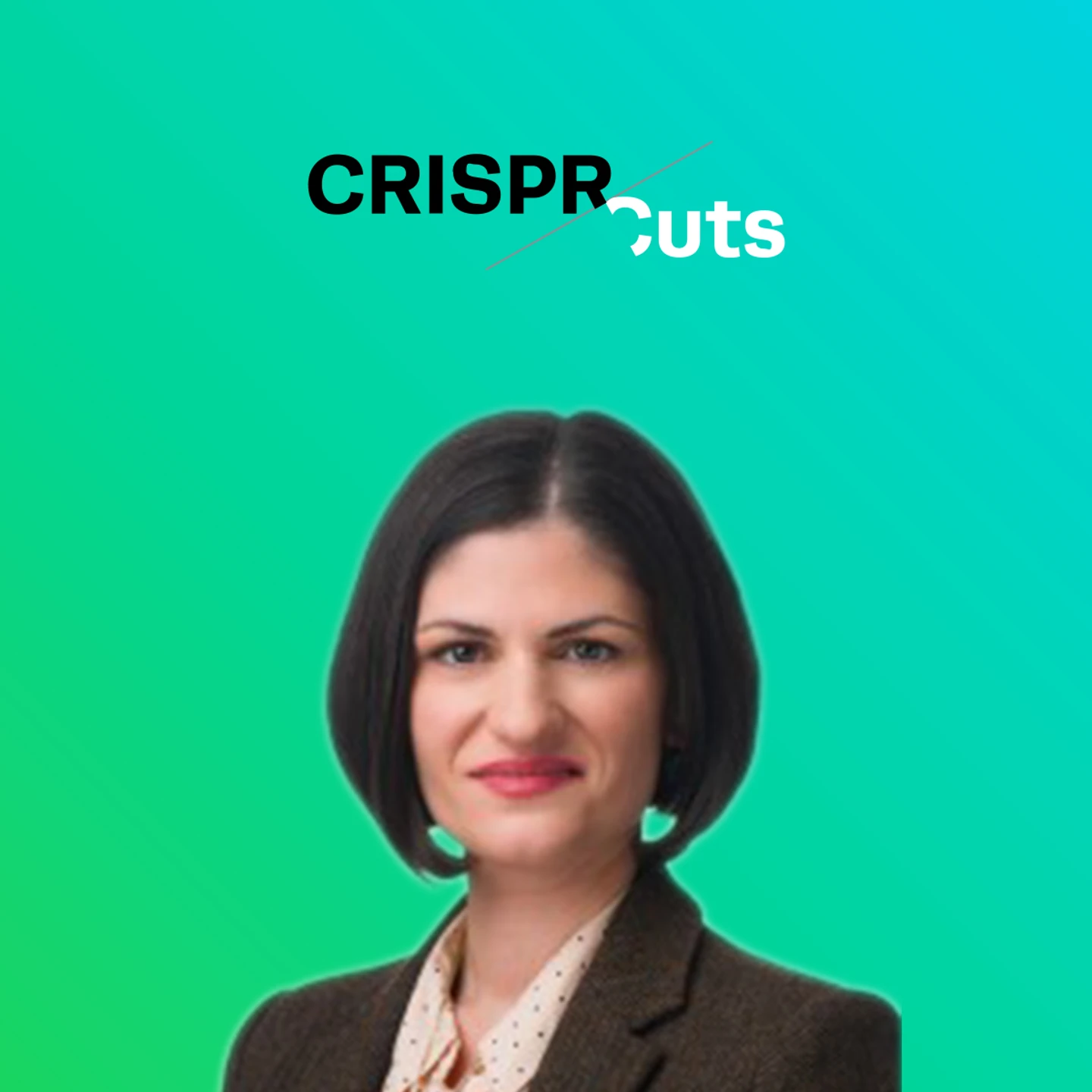
Science, Art, and the Importance of Ion Channels
Minu: Dina, could you tell us a little bit about yourself?
Dina: My training is in ion channel physiology and biophysics. In my PhD, I began my research career studying mutations in ion channels and how they affect their conductance, properties, and function. Then I moved into more complex systems to try to understand how these mutations could impact the function of excitable cells like skeletal muscle, and then neurons, using mouse mouse and rat model systems. Then about eight years ago I took the leap into using human stem cell models to study the roles of these ion channels in the context of human diseases.
Minu: Did you always know you wanted to be a scientist? Or how did you end up getting into science?
Dina: My family are all very science-y - my mom is a neurologist and my father is a physicist. So I figured, why not neuroscience? Because it’s kind of in the middle. Growing up, I also did a lot of painting so my family thought I was going to be an artist instead. But it turned out to be into science - I took one class in my undergraduate degree called ‘The Biochemistry of Youthful Exuberance’. And after that, I thought, “Okay, this is it”.
Minu: Are you still able to do painting on the side, along with your scientific research?
Dina: I haven't done any in maybe a year or so now. But usually, I try to do some - it's a good way to blow off steam, and it’s something besides doing research. I guess it's very different from research, but it's all about creativity and I think in science you have to have that creativity, so it makes sense.
Pete: And what really drew you into the research that you're working on right now?
Dina: My focus has always been on ion channels, and particularly potassium channels because they're super interesting proteins. Every single cell has them and requires them to regulate pH, cell volume, and action potentials in excitable cells. So for me, although sodium channels are very interesting and they are required for action potentials, potassium channels are modulated by all kinds of things, and so there's a lot to go on.
It's also the sense of instant gratification when you're patching onto a cell and you're looking at the current. Instead of waiting two days with antibodies to do immunocytochemistry (ICC), you can see whatever is happening right away - you can see [potassium channels] opening up and closing, and all their different properties. That's what drew me in, and that's why I've stayed in the field.
It's not a particular disease I'm interested in, I'm just interested in these channels, what their role is in cells, if they're modulated by mutations or how they're expressed, what kind of function or dysfunction that causes in the cell, and how the cell regulates it.
Overcoming Barriers of CRISPR Gene Editing in iPS Cells
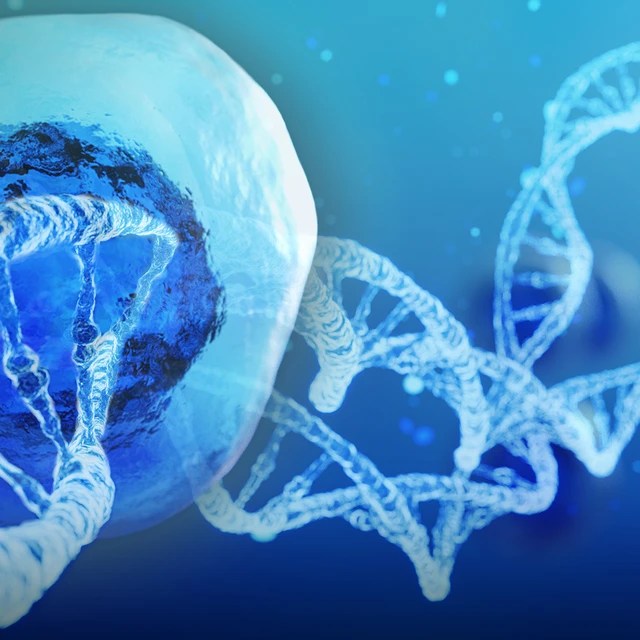
Genetic Mutations in Potassium Channels and How They Contribute to Epilepsy
Pete: So you're not necessarily driven by a disease-specific focus, but you mentioned genes. Are there any core genes that you're interested in studying that are related to your field?
Dina: The more we look into these ion channels in cells, we find that calcium is also involved in regulating everything - there are calcium-binding proteins that can regulate the function of ion channels, and that's really interesting. But it seems that in human diseases, there are mutations in pretty much all of these ion channel genes, so there are plenty of places to go. Before this, I was studying skeletal muscle diseases with different potassium channels, and now we're jumping to neuronal diseases, like epilepsy, which has another set of channels that have mutations.
Minu: Just to take a step back for some of our listeners who may not be as well versed in neuroscience, can you explain a little bit about epilepsy, for example? What has the research been so far, and how are the ion channels directly related? What kind of symptoms manifest in people who are suffering from these diseases?
Dina: Epilepsy is about whether or not neurons are excitable - hyperactivity in neurons is associated with epilepsy, and ion channels regulate that directly. Unlike other proteins in the cells, ion channels are the ones that pass the current that makes the cells fire. In terms of symptoms, you can record on electroencephalogram (EEG) and see during a seizure there are these hyperactive spikes, and then periods of no activity - so it's these waves of activity, that’s how you characterize a seizure.
Minu: What type of projects are you working on in your lab at the moment?
Dina: Right now, my focus is on KCNQ2-related epilepsy. We have a lot of patients who consent to provide blood samples so we can make stem cells from them. It’s a plus that I get to work with patient cells rather than just with animal models because we can look at actual human mechanisms [of diseas]. Our focus is really to figure out how KCNQ2 gene mutations affect the neurons that we differentiate from the patient stem cells.
There are also other projects in the lab, on other potassium channels and some work on sodium channels as well. But my interest was more in potassium channels because they're fascinating - they don't just open and close, they can be modulated in so many different ways and they're regulated homeostatically within the cells, as well. So that's another major interest.
Pete: In the context of KCNQ2, when there are mutations in this particular gene, what is the functional manifestation of that?
Dina: There are very interesting clinical phenotypes with these. There are some missense mutations that cause a dominant negative loss-of-function of the channel. Then some mutations are truncation mutations that will make it haploinsufficient. Also very rarely there are gain-of-function mutations, which make the channel function more, and the clinical phenotypes there seem to be different for all of these types of mutations.
So far, we've mainly focused on the dominant negative loss-of-function mutations and we find very specific cellular phenotypes with these as we differentiate neurons. Early on, they have phenotypes that are related to the loss-of-function of this KCNQ2 channel. But as they mature, there's some sort of compensatory mechanism that allows them to express other potassium channels to compensate for the loss of [KCNQ2 channels].
These dominant negative loss-of-function mutations are associated with developmental and epileptic encephalopathy, while the haploinsufficient ones are associated with benign, self-limiting epilepsy, like neonatal epilepsy, while the gain-of-function mutations are associated with developmental encephalopathy, without neonatal seizures - they might have seizures later on, but not at the same time point, which is super interesting.
Pete: Are there specific neuronal subtypes that these are affecting? Or is this more of like a pan-neuronal impact?
Dina: KCNQ2 is expressed in most cells in the brain. So we're looking at excitatory neurons right now, and then we're going to shift to inhibitory neurons as well, and hopefully, at some point, organoids. But they’re also expressed in glial cells, they're even expressed in stem cells, so you can study them in pretty much any cell, which makes them interesting. Some of these patients actually have other comorbidities like movement disorders, and [gastrointestinal] issues, so they can be studied pretty much globally.
The Impact of CRISPR: Modeling Neurological Disorders in iPSCs and Creating Isogenic Controls
Minu: Can you talk about how you use CRISPR in your research, and also maybe give us some insight into the pre-CRISPR days, how the field was back then, and how CRISPR has changed the field?
Dina: Unlike animal models, which are quite inbred and have very little genetic heterogeneity, humans have a great deal of genetic heterogeneity. This can affect the cellular phenotypes that we find in ways that we can't even predict, and that makes it very difficult to relate any given cellular phenotype to a specific disease. So unless you use a very large number of subjects, which means a large number of stem cell lines from different healthy controls and patients, you can't predict which type is really specific for the disease rather than just variability between controls.
Being able to use CRISPR eliminates that because we can study having and not having the mutation within the context of the same genetic background. So we can ask the question of how that specific mutation affects the function of these differentiated cells - the phenotype can be directly related to having or not having the mutations.
Minu: How many years has it been since your lab adopted CRISPR? Is it easy now, or does it come with its own challenges?
Dina: The lab was established about eight and a half years ago, so since then, we've been using CRISPR to make these cell lines. We're studying a monogenic, highly penetrant disorder, and we can ask those questions, about what a specific mutation is doing. Unlike in some neurodevelopmental disorders that are polygenic, or the cause is unknown, we know the cause. That makes it easier to ask those questions and try to figure out how the cells function with these mutations in the context of the patient's genetic background, which is super important.
Pete: Regarding the use of patient-derived IPSCs, what is the importance of these models for your research? What were the models before, and how are you able to use these models now?
Dina: I think we were actually the first lab to publish on KCNQ2 mutations in stem cell lines. There are plenty of mouse models, but early development is very different in mice than humans, so I think that it's important to understand the human developmental process, in the neurons that we differentiate from the stem cells.
Before having access to human cells with these mutations, the next thing would be to insert the mutation into a healthy control line. The problem is that healthy control lines are just so variable in terms of genetic background that it makes it hard to figure out whether the mutation is necessary or sufficient. I think you have to do both, to have a patient line where you correct the mutation, and then to have a related control with a similar genetic background, where you insert the mutation.
Pete: What has been the importance of generating isogenic controls within your field of epilepsy? Are there a sufficient number of these models that are available from repositories, or has the onus been on the researchers to generate them?
Dina: In the past, it has been on the researchers to generate [the controls] themselves, and that's where we started off. Nowadays, there are a lot of NIH-sponsored projects that are making these kinds of different mutations in the same cell line. There was a big project where they genetically characterized a lot of different healthy control lines that have been used, and they found that in some of them, there are some mutations that are associated with disease, even though the patient that it came from, was entirely healthy.
That was another trick, to figure out which cell line to use as the healthy control, because there's so much variability, and everybody has some mutations in them. But when you're looking at patient lines, we already know, this patient has this disease, and they've already been clinically tested against whatever gene panel, or whole genome or exome sequencing has been done. So we have the clinical information, and we have cells from them that we can differentiate into whichever lineage we want.
Pete: Based on the literature, how many different mutations have been characterized for KCNQ2 in relation to these epilepsies?
Dina: There are about 600 or so different mutations that have been identified in patients. But in terms of stem cell lines, I think we are the only ones that have published on stem cell lines with specific mutations, I think we've published on five of them. One of our papers is a full characterization of one of the patient lines and an isogenic control, and we have another paper where we show how we do quality controls for these patient lines. So far I don't think there have been any other papers, using stem cell models with other KCNQ2 mutations.
Pete: It sounds like there aren't currently any initiatives that emphasize the need to have a central repository where you can model all these different mutations across a single cell line.
Dina: First of all, it's pretty difficult to do - to work with stem cells in general takes a lot of money and supplies. Then to have CRISPR takes more time and it's a huge expense. Right now I think the focus of NIH is to look at these neurodegenerative diseases, like Alzheimer's, Parkinson's, and ALS, and they're inserting these mutations into a healthy control.
But this is one gene with all these different mutations, and so far, the focus has been trying to express these channels in heterologous expression systems and figure out whether the patient mutation is causing the channel to have a loss of function or gain of function, or what it’s doing and whether it's pathogenic. That has been one of our efforts with Alfred George's lab at Northwestern - to try and characterize the hundreds of mutations that are being identified in patients.
Addressing Challenges in Neurological Research and the Future of the Field
Pete: Outside of studying all these different mutations, what are the unmet challenges within your field, and how is your research, and the research of others, addressing those challenges?
Dina: There’s a lot of skepticism about studying neurons derived from stem cells because it's not a network system. That's the criticism that we typically get, but some things are worth studying. Like looking at the intrinsic properties of a neuron - these are important to understand how the network could function within a human brain, since we can't have access to that.
The other challenge to convince people that cell culture models are legitimate is to have the proper controls so that you know for sure that you're studying the mutation that you think you’re studying. Because over multiple passages with CRISPR, there can be other aberrations in the genome of the cells, and then you can subclone it out somehow, and then what you're studying is something completely unrelated to your mutation, and you discover that the phenotype is not really what you want to look for, or what is relevant. That's a major challenge: doing the proper quality controls and being consistent.
There have been some efforts to develop best practices for stem cell models, but a lot of labs that are just getting into it, may not have the proper training and knowledge of all the problems, and they may discover things that are not relevant to their disease. It’s important to try to avoid those things.
Minu: Now that you have CRISPR and there is a lot of awareness about how to generate these models with the right controls, where do you see the field five years from now? And what are you largely excited about, both in terms of your own projects and more broadly, the neuroscience field in general?
Dina: As I mentioned earlier on, we found a very interesting phenotype in our KCNQ2 patient lines that is consistent with the loss-of-function of KCNQ2, but later, you have this homeostatic, maladaptive plasticity that happens and there are changes over time that are not directly related to the loss-of-function of KCNQ2, which is super interesting. So our next goal is to try to figure out what those mechanisms are, and how cells will maintain or compensate for those genetic mutations. I think this is going to be really important in terms of epilepsy and ion channel disorders.
I think a lot of people are finding that if you try to assess a phenotype at one time point, it may be very different from the phenotype at a different time point. So this is a huge take-home message from our work - unless you're going to look at a time course of phenotypes, you're not going to catch these changes, and you can attribute a phenotype that's not really related to the actual initial trigger.
When we're looking at neurodevelopmental diseases, it's important to follow the maturation process of these neurons and see how they change over time because of the mutations. So I think that's going to be a major focus in the next five years in the field and in our own work - to look at this homeostatic plasticity or compensation.
Minu: We always like to end with a fun question on the podcast. So what what is your favourite sci-fi movie, if you had to pick one?
Dina: I think The Martian. My favorite line is, “I'm gonna have to science the s*** out of this”. And that’s what we do!
